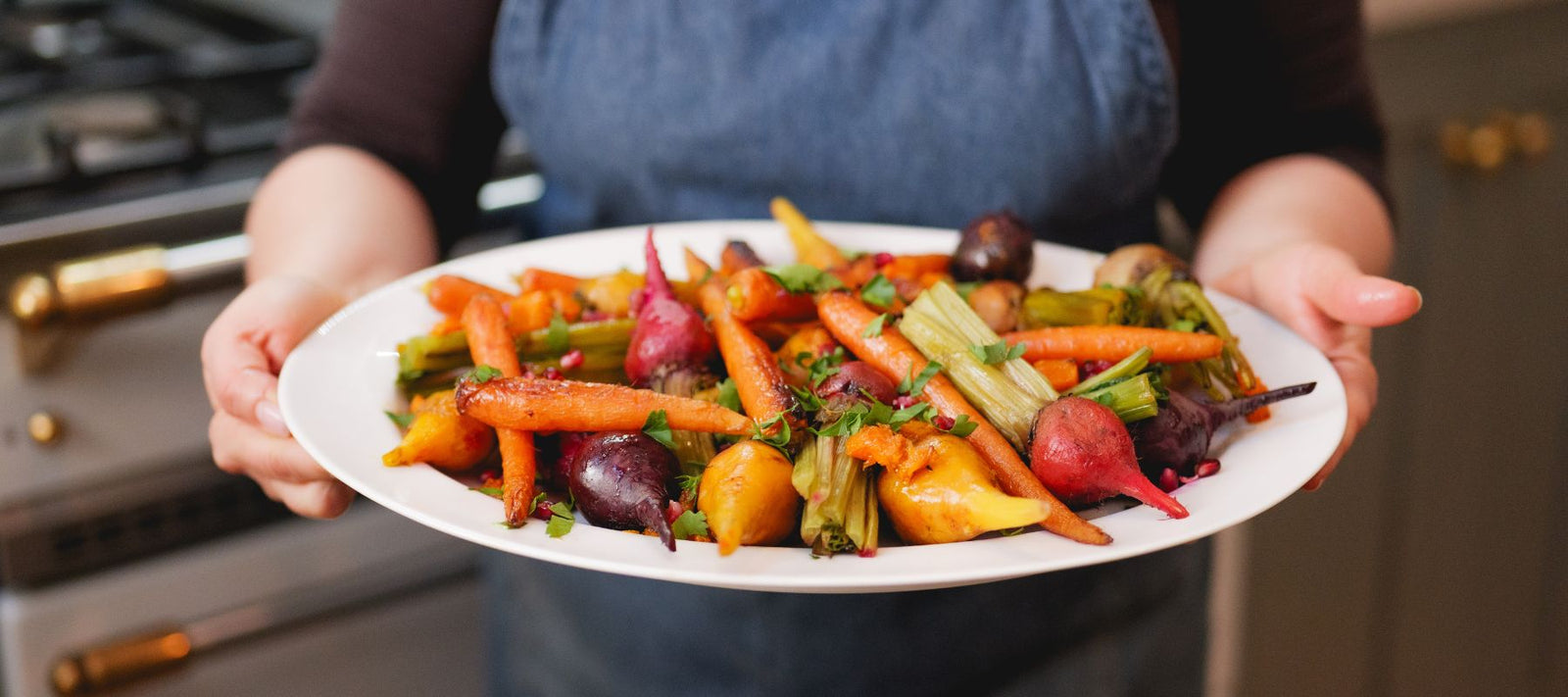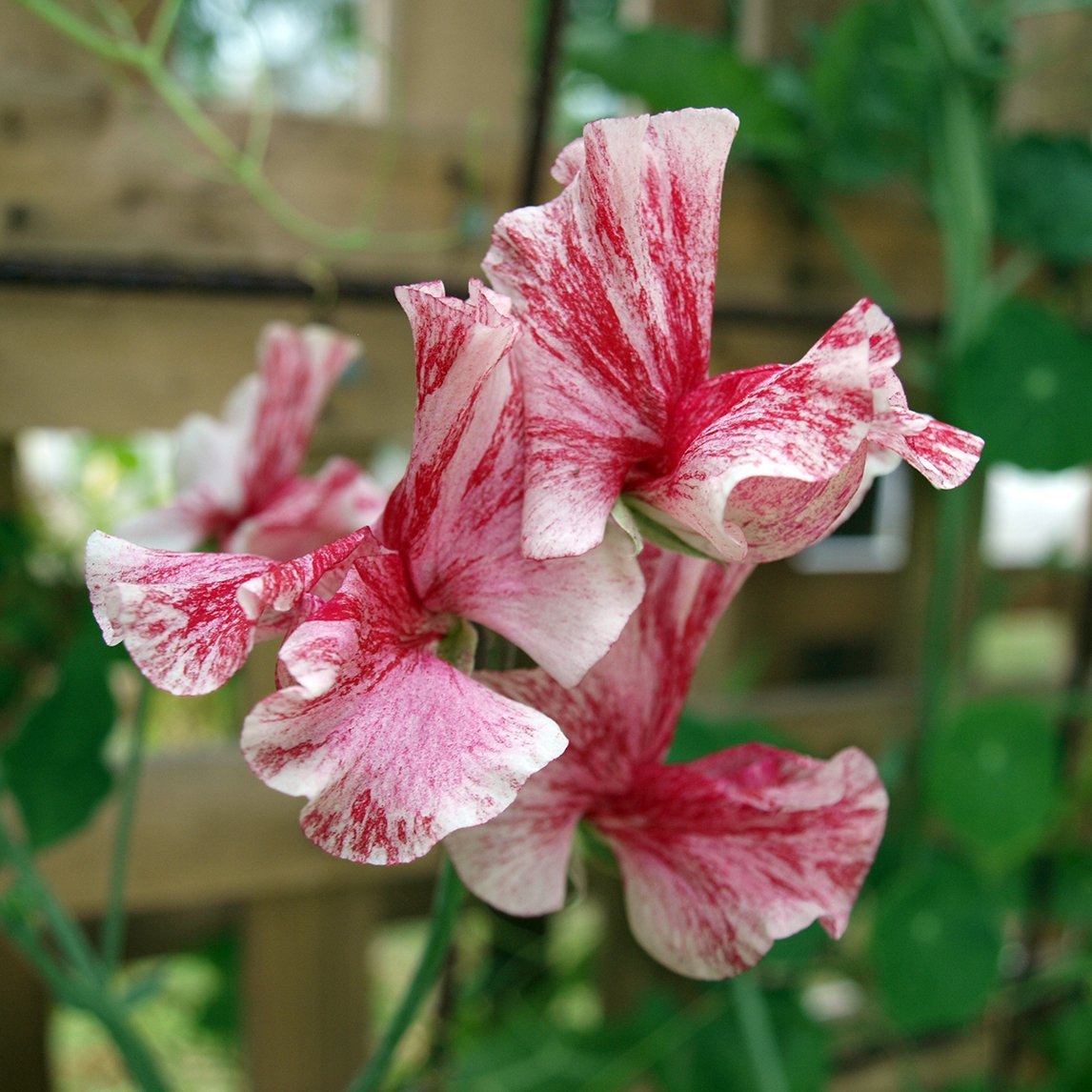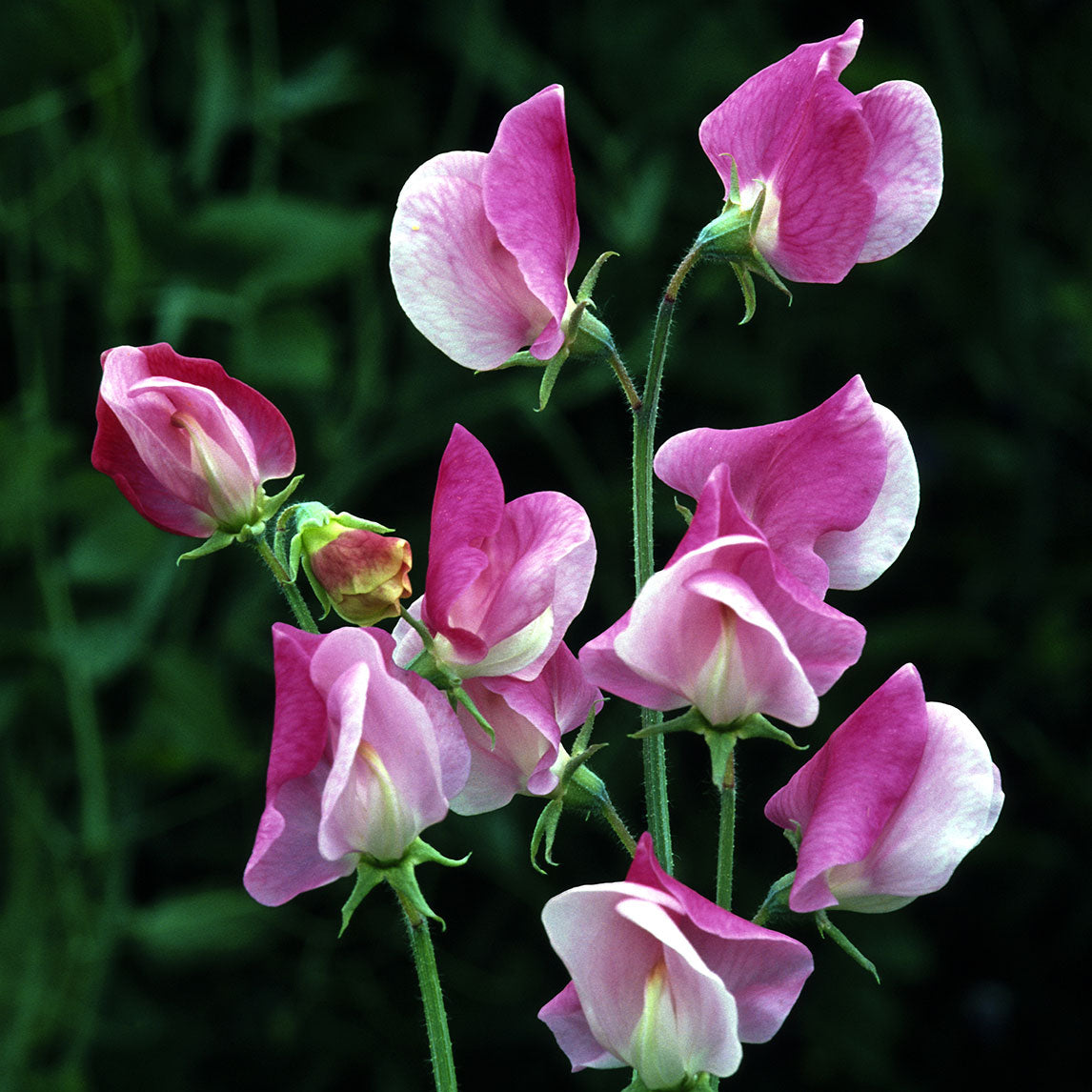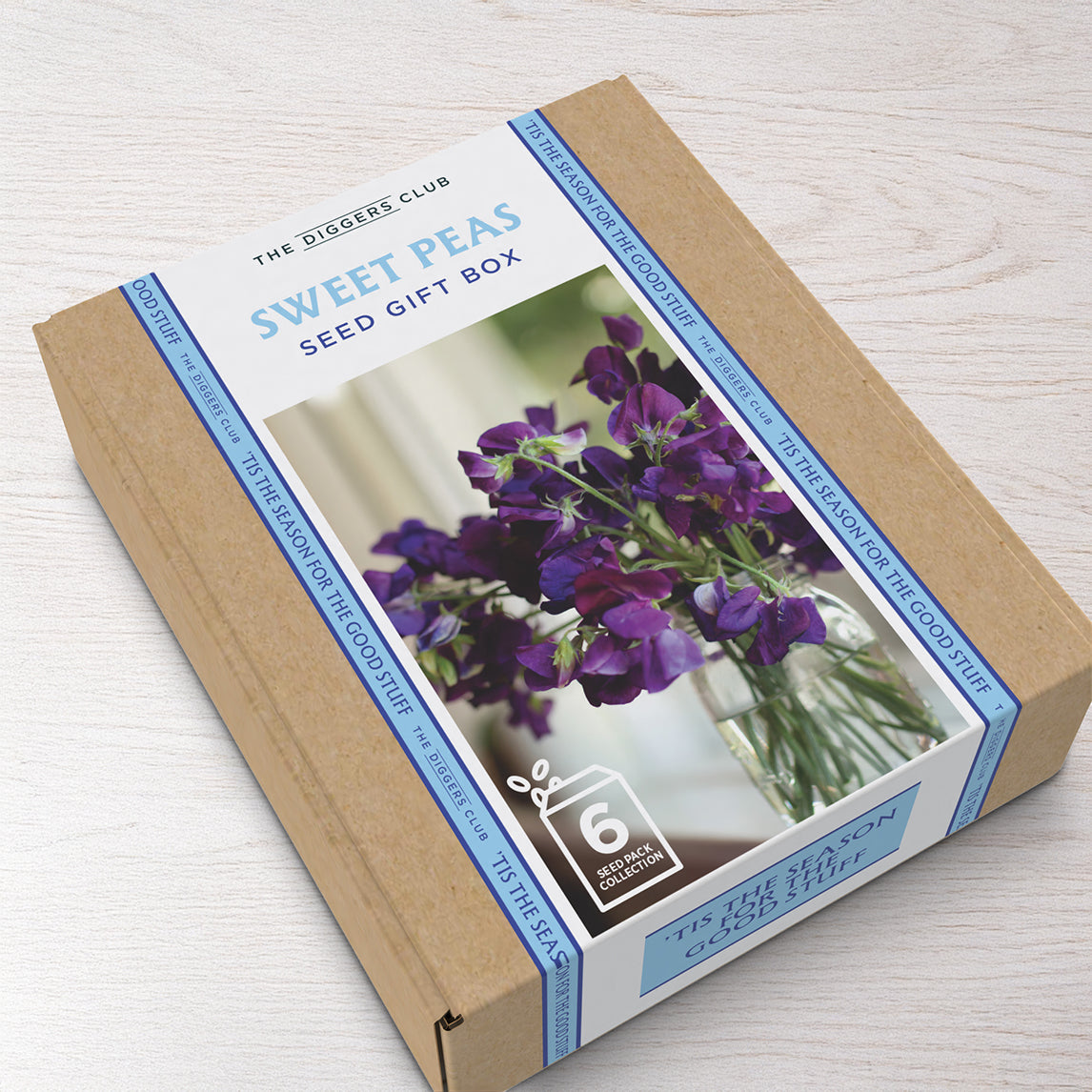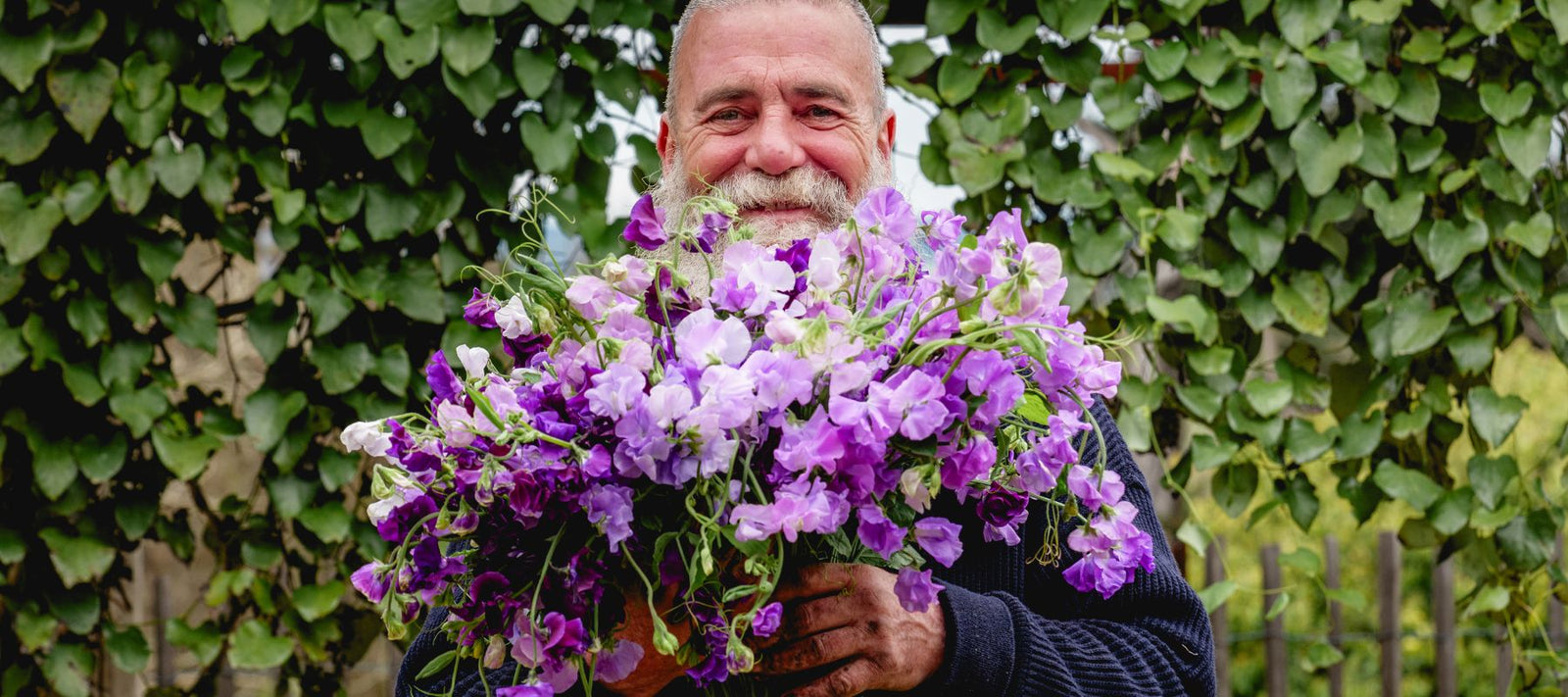
Sweet peas are the perfect mix of beauty and charm. They’re cottage garden classics, treasured for their delicate tendrils, soft pastel blooms, and above all, their perfume – especially varieties we offer which are known for their colour and fragrance. A bunch of freshly picked sweet peas will fill a room with a beautiful scent and they’re one of the best cut flowers you can grow yourself.
Over the years, I’ve grown just about everything, but these little romantic flirts of the garden remain one of my favourites. What I love most about sweet peas is how much they give back for so little effort. With the right start, they’ll climb, flower, and keep producing right through the season, as long as you keep picking.
Become a Diggers member today and enjoy exclusive sweet pea varieties.

My Sweet Pea Growing Tips
1. Choose the right varieties
There’s a sweet pea for everyone, whether you want strong fragrance, soft colours, or bold, ruffled blooms. At Diggers, we grow old favourites like High scent and Matucana for its incredible scent, and heritage beauties likePainted Ladyand Miss Willmott. If you’ve got the space, mix a few varieties so you get the best of both colour and perfume.

2. Prepare the soil
Sweet peas like rich, well-dug soil. Before sowing, I always work in compost or well-rotted manure, and a handful of lime if the soil is on the acidic side. They’re hungry growers, so the more you give them at the start, the better they’ll perform.

3. Support them early
Set up a trellis, netting, or obelisk before you sow. Sweet peas send out tendrils quickly, and you don’t want to be trying to add supports once they’ve started climbing. I like using simple frames covered in biodegradable netting. It makes for a neat display and the plants love it.

4. Sow at the right time
You can sow sweet peas directly in the garden once the soil warms up, or start them earlier in traysto get a jump on the season. In cooler areas, autumn sowing gives them time to establish before the heat. Sweet peas are best sown from autumn through early winter in most parts of Australia, giving plants time to establish strong roots before flowering in spring. If you missed autumn sowing, plant in early spring once the soil has begun to warm.. Wherever you are, plant them where they’ll get full sun.

5. Keep them happy
Water regularly, especially once they start to flower, and keep picking blooms as they appear. The more you cut, the more they’ll give. If you leave flowers to form seed pods, the plant thinks it’s done and slows down, so enjoy the cut flowersindoors and keep the display going outside.
Sweet Pea Pitfalls
Even though sweet peas are generous growers, a few small problems can trip them up if you’re not ready for them:
Snails and slugs - young seedlings are their favourite snack and can be wiped out overnight. Protect them with barriers, traps,or by checking regularly.
Powdery mildew - often appears later in the season if plants are stressed. Improve airflow, water at the base, and remove any affected leaves.
Heat stress - sweet peas don’t love scorching conditions. In hot regions, sow earlier so they can bloom before the summer heat kicks in.
The good thing about these nature challenges is that they’re easy to manage, and the reward of armfuls of flowers is well worth the effort.
For me, there’s nothing better than stepping outside on a clear morning and catching that unmistakable perfume drifting on the breeze. It’s simple, it’s nostalgic, and it’s a reminder of why I garden in the first place.
Give sweet peas a go this season. Grow them up a fence, an obelisk, or even a few pots on the patio and enjoy the reward of flowers that keep on giving.
Mick is the Team Leader of seed and trial production at Diggers. With years of experience growing heirloom vegetables, he has a soft spot for fragrant cottage blooms, especially sweet peas.






